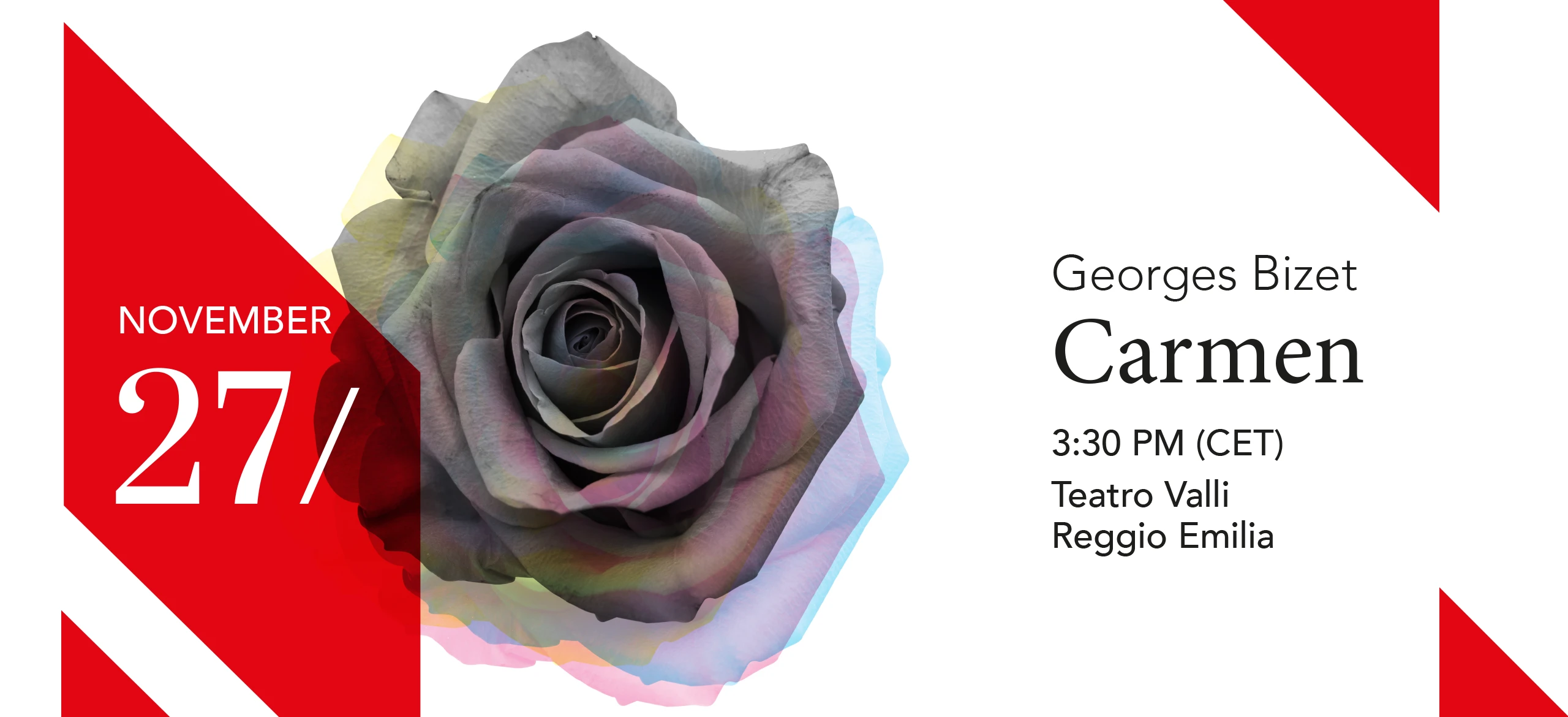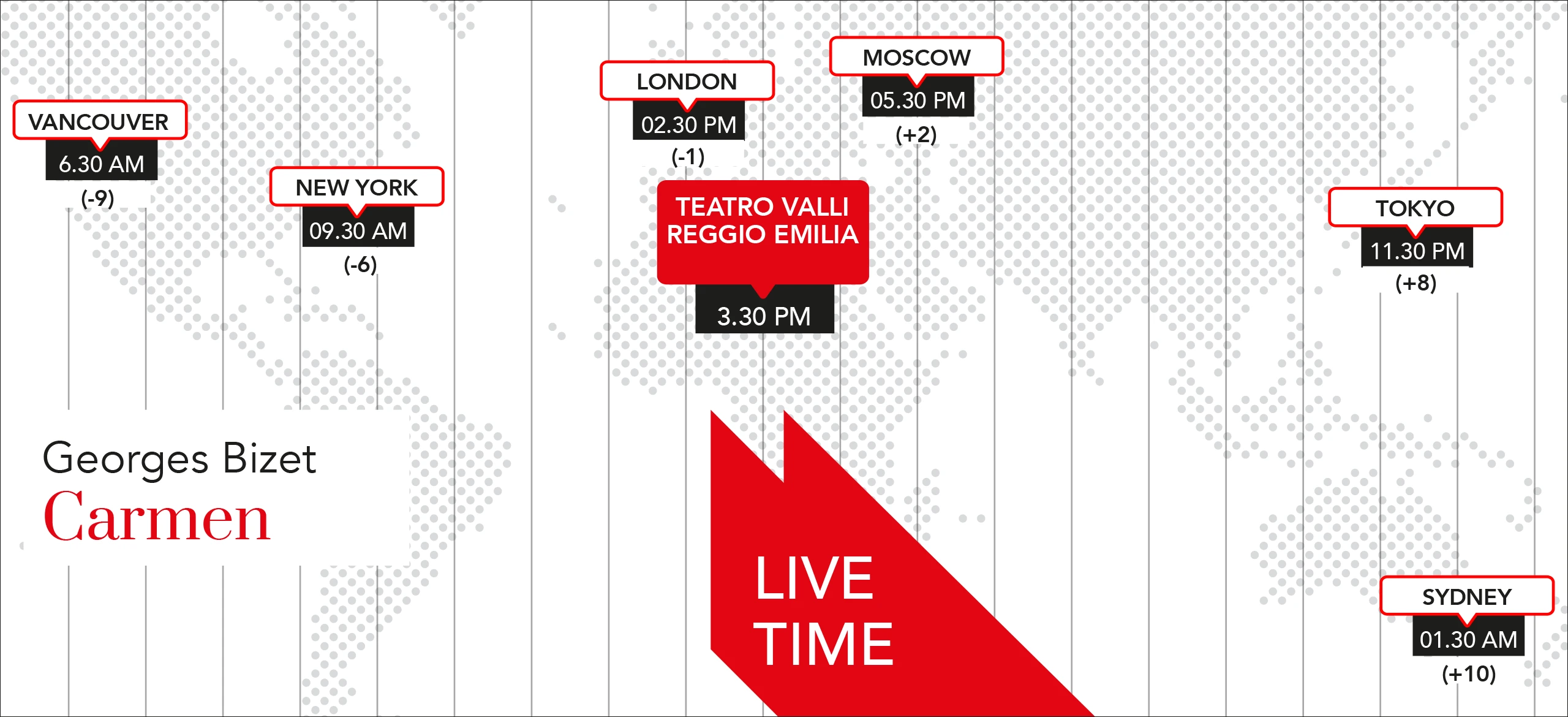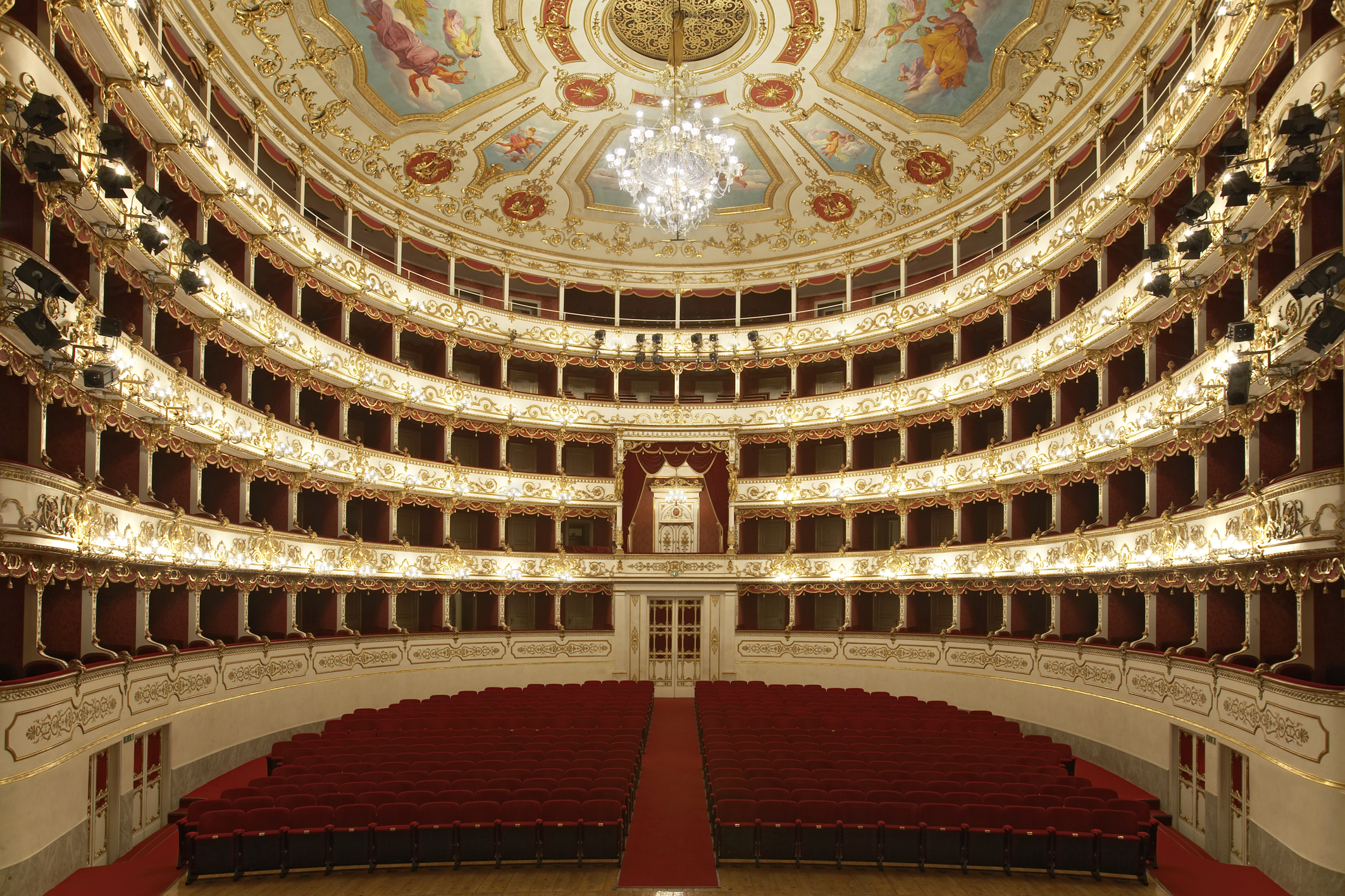AVAILABLE UNTIL
27 May 2023


CARMEN
Georges Bizet
Opéra-comique four acts by Henry Méilhac and Ludovic Halévy
from Carmen by Prosper Mérimée
Carmen Martina Belli
Don José Arturo Chacon Cruz
Escamillo Marco Caria
Micaela Laura Giordano
Dancairo Alessio Verna
Remendado Saverio Fiore
Morales Gianni Giuga
Zuniga Massimiliano Catellani
Frasquita Anna Maria Sarra
Mercedes Chiara Tirotta
Orchestra dell’Emilia-Romagna “Arturo Toscanini”
Banda dell’Orchestra Giovanile della Via Emilia
Coro del Teatro Regio di Parma
Coro di Voci Bianche del Teatro Regio di Parma
Conductor Jordi Bernacer
Director Silvia Paoli
Set Andrea Belli
Costumes Valeria Donata Bettella
Lights Marcello Lumaca
Video Francesco Corsi
Coreographer Carlo Massari/C&C Company
Chorus master Martino Faggiani
Chorus master children chorus Massimo Fiocchi Malaspina
Coproduction Fondazione Teatro Regio di Parma and Fondazione I Teatri di Reggio Emilia
“In this staging there is, for me in particular, the revelation of how this too is yet another story of a woman seen through the eyes of men,” explains director Silvia Paoli, who has signed operas such as Cinderella, in Tenerife, Le Nozze di Figaro and Capuleti e Montecchi later revived at the Comunale di Bologna, Turandot for AsLiCo, Vent du Soir and Il Barbiere di Siviglia in Florence, The Moth Princess in Oman, Otello for Progetto 200. Com in Como, Enrico di Borgogna in Bergamo.
“The whole story is actually a subjective one, it is the confession of a man condemned to death, and what is told takes place through two deaths, the one that took place in Carmen and the one decreed by Don José,” Silvia Paoli continues. “It therefore seemed important to me to focus on the fact that Carmen does not really exist except through the words of her murderer and that therefore the real protagonist of the story is Don José, the one who carries out the action. We know nothing about Carmen that is not in relation to him, Carmen does not change, Don José is transformed in the name of a passion (which I am careful not to call love) experienced in an obsessive, sick way that leads him to not tolerate the idea that he can no longer possess what he wants; a story that we could very well read even today on the news of any newspaper. So I thought of a prison and the whole affair not so much as a flashback but rather as an obsessive memory of Don José reliving from his cell his encounter with Carmen and the tragic denouement of his story, recounting and distorting it through imagination, his own point of view. Memory emerges from the box of personal objects and thus the flower, the photo of Micaela, a newspaper clipping, sand in a shoe, which evoke spaces and situations. The image of Carmen and their story is so nagging that Don José comes to confuse reality with memory, so much so that he even distorts the everyday, in a spiral that will lead him to empathize with what he remembers, to live continuously between dreaming and waking without almost being able to distinguish them. Since the 1960s was a period when a process of emancipation began to take place for women (I recall that in Italy the crime of adultery was abolished in 1968 and honor killing only in 1981) and the pillars of patriarchy were being questioned, it seemed right to place the story in those years, where many men’s dreams continue to oscillate between the devoted wife and the lascivious lover (the Saint and the Devil, Micaela and Carmen) but for “the weaker sex” prospects for growth and rebellion are opening up. Throughout the opera women are treated as commodities, they must be paid, they exist as cigar-maids (easy and light women) or to distract customs officers with smiles and body parts; it is a male eye that watches, reality is filtered, it is a man speaking. I am convinced that in order to talk about feminicide without rhetoric, it is necessary more than ever for Carmen to die; calling the person who killed her not a “betrayed lover” or “jealous boyfriend” but a murderer and putting him in prison is a way to do justice to Carmen and to all women who want to be themselves, regardless of the wishes of others.”
Extra
LIVE FROM

TEATRO VALLI DI REGGIO EMILIA
The majestic Teatro Valli complex, surrounded by the public gardens, characterizes the town centre. It covers an area of 3,890 square metres. It hosts prestigious opera and concert seasons, as well as a rich programme of ballet. It contains a library, an archive room and a historical record library, all open to the public. The complex was built between 1852 and 1857 according to a design by Modena architect Cesare Costa. The theatre has been repeatedly restored without changes in its original structure. In 1980 it was dedicated to Romolo Valli, a famous actor of Reggio Emilia.
La Bohème
Teatro Comunale di Modena
13 ottobre 2019 - ore 15.30
Turandot
Teatro Regio di Parma
19 gennaio 2020 - ore 15.30
Falstaff
Teatro Municipale di Piacenza
26 gennaio 2020 - ore 15.30
Cavalleria Rusticana e Pagliacci
Teatro Valli di Reggio Emilia
9 febbraio 2020 - ore 15.30
Lucrezia Borgia
Teatro Dante Alighieri di Ravenna
8 marzo 2020 - ore 15.30
L'Elisir d’Amore
Teatro Comunale di Bologna
10 aprile 2020 - ore 18.00
Madama Butterfly
Teatro Comunale di Ferrara
4 maggio 2020 - ore 20.00
OTHERNESS, FEAR AND DISCOVERY
Teatro Comunale di Modena
8 maggio 2020 - ore 20.00


Media partner:

OperaStreaming
Coordinamento:
Fondazione Teatro Comunale di Modena
Via del Teatro 8 - 41121 Modena
P.IVA e CF 02757090366
info@teatrocomunalemodena.it
Tel. 059 - 2033020


